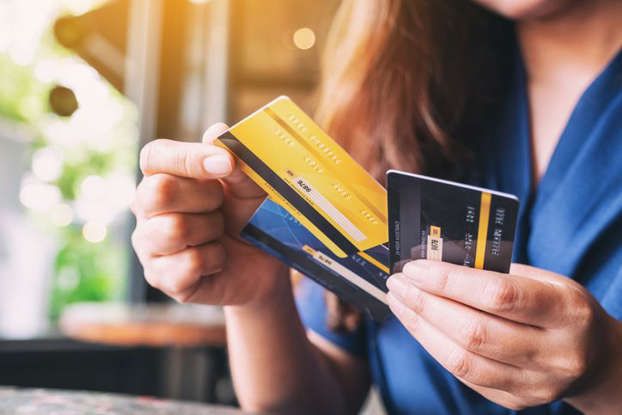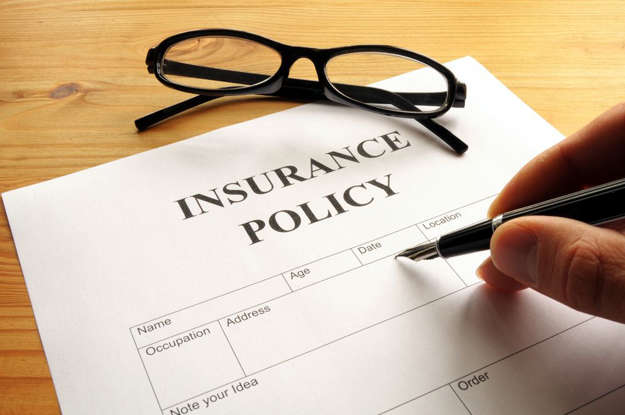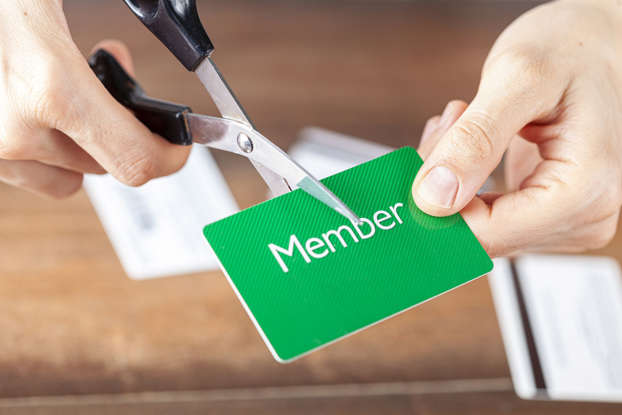17 surprising ways you are wasting money
Feel like you might be wasting money, but not realizing how to make a change? Saving money may feel impossible especially when you have little wiggle room in your budget after you pay all the bills, something many U.S. consumers do.
According to the Reality Check Paycheck to Paycheck research series from LendingClub, more than half of Americans are living paycheck-to-paycheck, with 21% struggling to make ends meet, and this issue impacts individuals across a range of incomes and ages.
Making more money by starting a side hustle, part-time job or even getting a new job may seem like the only way to improve your financial situation. And while it certainly can, don’t overlook your own budget for savings. Spending a little time reviewing every bill could reveal some wasteful budget leaks. And when plugged, they provide enough financial breathing room in your budget.

1. Throwing away spoiled food
Most of us add food items we didn’t intend to at the grocery store. But few of us think about how that impacts our overall budget. In fact, all those extra groceries may be ending up in your trash. According to a report from Feeding America, the average family in the U.S. throws away around $1,600 worth of produce annually.
To plug this budget leak, spend time meal planning for each week. Also, look for recipes that use the same ingredients to truly minimize your shopping needs. Then strategically place all your new ingredients at the back of the fridge. This way, you grab the food in the front row first before it goes bad.

2. Carrying a balance
Everything you buy with your credit card will instantly cost more if you carry a balance from month to month thanks to interest fees. Although paying more than the minimum due may not be an option right now, you can avoid wasting money by paying down debt through a 0% balance transfer card.
Before applying though, compare details at sites like CardRates.com to ensure you pick the best option for your financial needs.

3. Forgetting to unplug gadgets
American households have dozens of gadgets that consume energy when in use, but what about when they’re turned off? According to the Department of Energy, electronics and appliances continue drawing electricity when they’re plugged in even in the off mode. And this accounts for 10% of your utility bill. This includes your mobile charger!
To save, get in the habit of unplugging your gadgets and small kitchen appliances when not in use. You can even use smart Wi-Fi plugs that can be controlled through your smartphone for those hard-to-reach areas like your entertainment system

4. Paying bank fees
Opening an account at your local bank seems like a smart move when it comes time to work and manage your earnings. But, fees can quickly waste the money you’re making. In fact, the average checking account fee stands around $14 per month according to this MoneyRates survey. Considering there are plenty of free checking account options, moving your money could free up lower overhead costs that they pass on to customers in the form of lower fees and no-fee checking accounts so making the switch can help you save.

5. Overlooking savings rates
If you have savings sitting in a traditional savings account, you’re wasting money. Brick-and-mortar banks not only have high fees, but they also have the lowest return on savings with rates that hover at or below the national average of 0.06%. Moving your money to a high-yield online savings account where you can earn as much as 0.61% through e-banks like Axos Bank means your money will grow faster without any additional effort on your part.

6. Ignoring insurance price hikes
When you first signed up for auto, homeowner’s or life insurance, you may have scored a great deal, but policy prices typically rise over time, and ignoring these plan hikes is costing you big bucks.
According to a recent report by Driving in America, over one in three Americans didn’t compare auto insurance costs or check the price of their policy within a three-year period, which made them miss out on over $416 a year in potential savings.
Running a quick price comparison on TheZebra.com can help you pinpoint similar or better coverage at more affordable rates, saving users over $900 a year on auto insurance based on the national average. You can even lower your annual insurance premium by increasing your deductible.

7. Renewing unwanted subscriptions
While subscriptions offer a convenient way to pay for a good or service, the autopay feature can easily get overlooked as time goes on, leading to wasteful spending. In fact, a study from finch startup Hiatus found that a whopping 70% of consumers continue paying for unwanted subscriptions simply because they forget to cancel before their account was renewed. While there’s little you can do about past accounts going unused, spending time to list out all the subscriptions and memberships you’re signed up for can help you pinpoint unneeded services which you should cancel immediately. There are even tools like Trim that can do this for you.

8. Leaving the coupon code box empty
More people than ever are shopping online for everything from groceries to home goods, but only 51% of these shoppers say they look for a coupon before buying, as reported by the Shopper Story 2020 report from Criteol. Perhaps that’s because only 35% of promo codes posted online actually work, according to this study.
The process of hunting down a deal is extremely discouraging when all you find are a series of expired or invalid codes. But, giving up on the search could mean missing out on savings. Luckily, there are browser tools that can take the pain out of couponing. Just download Cently and watch as it automatically searches for and applies the deal with the biggest discount to your order almost instantly, ensuring you never miss a deal again. You can even activate cash back on many orders using this browser extension, too.

9. Swiping the wrong credit card
Not all rewards cards are created equal. An finding the one that will give you the most money back requires a little research. Indeed, it’s something most consumers don’t do. In fact, many people use the same card they’ve had for years which means missing out on free money.
Credit card matching tools like GigaPoints.com say you could earn up to an extra $1,000 in credit card rewards by switching to a new card that better fits your spending style. This tool analyzes your spending and recommends the best alternative rewards card that will offer maximum earnings for the types of purchases you make the most.

10. Letting rewards go unredeemed
Credit card rewards are great if you actually use them. But, a shocking 31% of cardholders haven’t redeemed their rewards, according to a Bankrate survey. With the holidays quickly approaching and prices on consumer goods going up, cash in on your rewards to pay for seasonal purchases. Even if you don’t plan to travel, you can exchange miles or travel points for gift cards, and cashback earnings could be stashed into a separate account to help pay for holiday gifts and hostessing costs.
To better manage all your rewards moving forward, use an app like AwardWallet where you can track loyalty points, including frequent flier miles, hotel points, dining rewards and even shopping reward

11. Only buying organic
Think twice about which organic produce you’re buying. According to the Environmental Working Group, there are 15 fruits and vegetables that are perfectly safe to eat in the non-organic form, dubbed “The Clean Fifteen,” which includes melons, avocados and pineapple. With the mean cost for organic items around 68% higher than non-organic, changing the way you shop for produce can result in considerable grocery savings.

12. Too lazy to self-checkout
You may want to think twice before you pass up self-checkout in favor of a staffed checkout lane. According to The North American Self-Checkout Systems study, impulse purchases made by women drop by 32% on average at the self-checkout lane. This could be due to the fact that you’re more distracted when a clerk checks you out compared to when you’re scanning all the items yourself. However, since Americans are spending a whopping $183 a month on impulse purchases as reported by Slickdeals, using self-checkout could be a quick fix to this unnecessary spending.

13. Restricting calories
By now, you’ve likely heard that grocery shopping on an empty stomach will cause you to spend more and buy food you didn’t plan to. But a new study found that it doesn’t end with food. According to the Proceedings of the National Academy of Sciences, hungry shoppers spent 60% more and bought more non-food items than customers with satisfied food cravings. Making sure you consume enough calories throughout the day will keep your energy up and spending down.

14. Ignoring your credit score
Ignoring your bad credit score won’t just make it difficult to buy a car, own a home, rent an apartment or get a smartphone; it will cost more, too. According to the Urban Institute, borrowers with subprime credit scores spend $400 more in interest for a $550 emergency loan over three months and $3,000 more in interest for a $10,000 used-car loan over four years than those who have prime credit scores. Meanwhile, you’re looking at forking over a deposit of anywhere between $250 and $1,000 to get a smartphone from wireless providers like AT&T.
Your credit score may even impact the cost of your car insurance. For example, this report found that drivers with a very poor FICO credit ranking paid 115% more for auto insurance than those with exceptional credit. However, improving your credit can be done with a little dedication and consistency. Do your best to pay all your bills on time. Also, pay down debt, review your report regularly and dispute any inaccuracies that could be lowering your overall score.

15. Carrying smaller bills
Most people have heard that paying with cash over credit can help curb impulse purchases. But did you know that the types of dollar bills you pay can also influence your spending decisions? According to a study on “the denomination effect,” published in the Journal of Consumer Research, shoppers are less likely to buy something using one large bill, such as a $20 or $50, compared to paying with the same amount in smaller bills, such as 20 one dollar bills. The results of this study suggest that large denominations of bills are psychologically harder to come by so people think twice before buying. So next time you go to the bank or ATM, make sure you’re requesting large bills to help avoid those impulse purchases.

16. Buying more to avoid shipping fees
Shipping fees are pesky, but buying more to qualify for free delivery is probably wasting money. When an online retailer tries to entice you to increase your cart total in order to qualify for free shipping, don’t take the bait right away. First, look at how much delivery would cost versus how much more you’d need to spend to get the delivery perk. In some cases, it makes sense to spend a little more. For instance, let’s say you’re a few bucks away from getting complimentary delivery. In that case, go ahead and add something small that costs about what you’d pay for shipping.
However, if you need to add another $25 or $50, ask yourself if you really need these goods. In the long run, you’re often better off just forking over the $8 for delivery to avoiding blowing more money. But there’s often a way around these fees. Look for other delivery options such as free in-store or curb-side pick up. Or see if you can sign up for a free trial of a shipping program in the event it’s offered.

17. Focusing on price rather than quality
An important element to being financially savvy isn’t just about trying to spend as little money as possible. Rather, it’s about knowing how to use it wisely and when to spend more on quality. When you’re overly worried about the price tag rather than the product and quality, you may find yourself with cheap items that break faster or just flat out don’t work and need to be replaced sooner.
Thus, you end up spending more money and time in the long run trying to buy replacements.
Although this doesn’t apply to all consumer goods, it’s important to consider quality, longevity and cost-per-use to make a better buying decision. Here’s a detailed save vs. splurge guide from MoneyCrashers to help you assess future purchases.








































